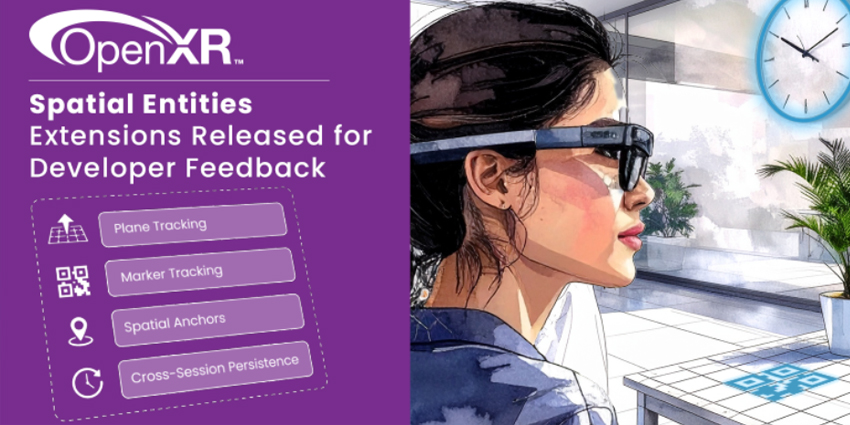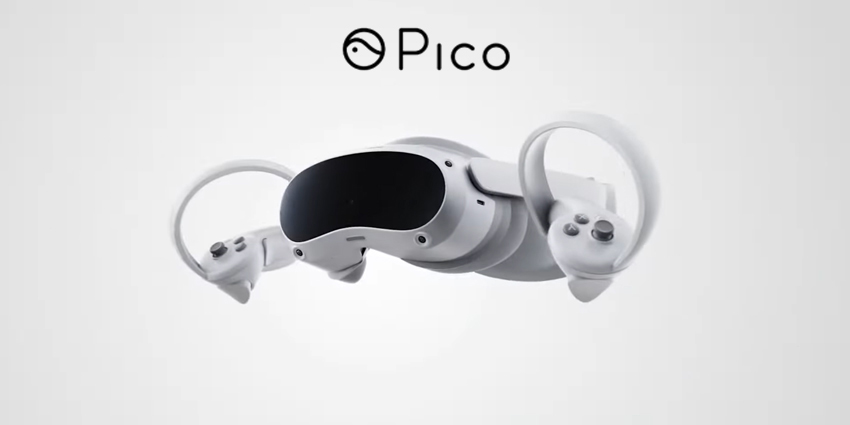This week, without surprise, was focused on CES. For a range of technology markets, not just XR, CES took over the headlines as it does each year, showcasing the latest innovations in emerging technology.
NVIDIA took centre stage at the event. The company’s CEO took the stage to introduce a range of technologies, including XR, AI, robotics, and self-driving cars. The firm is clearly on an active mission to become an undisputed leader in industry and enterprise-facing technology solutions, and its expertise in RT3D rendering is pushing that goal forward.
The event can reveal a sign of times to come as well as an insight into the year ahead. Technology innovations will be coming in fast in 2025, and the leaders in innovation could change the way the world lives and works.
Apple Vision Pro Helps to Train NVIDIA Robots
This week, at CES 2025, NVIDIA took centre stage to showcase its latest innovations in emerging technology. Namely, NVIDIA showed off its robotics and AI investments. The two go hand in hand for NVIDIA. As the firm researches robotics and self-driving cars, it is taking steps to develop an AI framework to power this next generation of tech.
According to the firm’s recent CES announcements, spatial computing and NVIDIA’s Omniverse platform will play a significant role in training the firm’s robotics, environmental AI, and self-driving car frameworks. These frameworks need to analyse and understand real-world spaces in order to operate correctly.
In its official press releases regarding NVIDIA robotics updates, Apple’s Vision Pro MR headset was featured in various promotional images, highlighting its pivotal role in this journey.
Reports from this year’s CES suggest that Vision Pro is deeply involved in the forthcoming success of recent announcements. For example, NVIDIA debuted Issac GROOT at the event, an AI framework for advancing humanoid robotics, specifically for industrial and manufacturing sectors.
NVIDIA developers can leverage Apple Vision Pro devices in their Omniervse workflow to capture human movements as 3D spatial data or a digital twin that a robot can replicate in a simulation or real-life scenario.
Combined with Omniverse, Apple Vision Pro, and NVIDIA’s broader developer ecosystem, they combine hardware and software to create the future of work and the role of robotics. XR plays a vital role in capturing crucial data for this journey.
Apple Vision Pro Gains Enterprise-Grade XR Streaming Capability
XR streaming solutions provider Innoactive announced a new product partnership with Apple and NVIDIA to introduce a streaming service between Omniverse and Apple Vision Pro.
The move enables NVIDIA Omniverse developers to stream their Universal Scene Description (OpenUSD) workflows to an Apple Vision Pro headset.
Innoactive announced NVIDIA spatial streaming for Omniverse at CES this week, aiming to continue immersive industry-wide advancements in streaming technology. This technology allows headsets to display high-quality 3D models and experiences.
This is a massive leap for the industry. If wireless streaming continues its uptick, the ability to stream more complex services onto increasingly small-end devices could prove paradigm-shifting for the AR/VR/MR hardware market.
The streaming platform notably supports streaming digital twin-related workflows to Apple Vision Pro devices. It parallels NVIDIA’s usage of Apple products in its simulation and robotics fields.
Furthermore, Innoactive notes that the CES announcement marks the debut of hybrid rendering, a platform feature that combines local and remote rendering. Therefore, the new hybrid-rendering feature allows NVIDIA developers to render fully interactive experiences in an Apple SwiftUI or Reality Kit application.
The new streaming platform’s features include streamlined access to immersive 3D environments, browser streaming, standard VR headset streaming, on-demand cloud tools, enterprise-grade security considerations, and support for NVIDIA accelerated computing technology.
Innovative is working to deploy its Vision Pro-ready solutions in professional settings today, such as working with Automotive firm Volkswagen Group and Healthcare leaders Syntegon.
XREAL’s AR Shades Shine at CES
XREAL’s highly anticipated XREAL One Pro glasses have debuted, showcasing their cutting-edge augmented reality technology. These stylish glasses represent a significant advancement in consumer-oriented AR and feature a sleek, wearable design that could easily be mistaken for a pair of Ray-Bans—more practical and much cooler than traditional VR headsets.
At the core of the XREAL series is the X1 chip, which keeps virtual screens stable while you move around. The standout feature of the Pro model is its innovative flat-prism lens design, providing an industry-leading 57-degree field of view within an 11mm profile. Additionally, the glasses are available in two sizes and offer adjustable eye spacing and software fine-tuning for a perfect fit.
Content creators will appreciate the snap-on XREAL Eye camera for first-person shooting, with AI features on the way. Moreover, sound quality is enhanced with Bose tuning, while the glasses ensure eye comfort with 700 nits of brightness and a full suite of certifications, including the first-ever 5-Star Eye Comfort rating.
These glasses are designed for style and endurance and are ideal for everything from quick video sessions to all-day wear.
Meta Quest Pro Discontinued
Outside of CES, reasonably significant news hit the airwaves to kick off the year.
Meta has discontinued its Meta Quest Pro MR headset after a mixed response in the enterprise market. The company recently updated the device’s landing page to indicate that the Quest Pro is “no longer available.” Although Meta has not provided a specific reason for discontinuation, it seems likely that the headset’s lacklustre performance in its targeted workplace market, combined with the recent launch of the more affordable Quest 3S MR headset, contributed to this decision.
The Meta Quest Pro was initially launched following its announcement at Connect 2022, preceding the Meta Quest 3 and 3S. At the time of its discontinuation, the Quest Pro was priced at approximately £469.99, which was considered steep by many.
While the headset featured impressive MR capabilities, including colour passthrough, eye tracking, and hand tracking—technologies that were innovative at the time of release—the Quest Pro has been overshadowed by the more accessible 3 and 3S series of MR headsets, making it somewhat redundant.
Despite its challenging journey, the Quest Pro should be recognized as an essential milestone for Meta. Since its announcement in 2022, the company has committed significantly to MR and augmented reality (AR) devices, expanding its product portfolio beyond virtual reality (VR) services to include MR headsets, AR smart glasses, and more.







